Our Pekin duck was a problem. Belligerent and lascivious, he had taken the peace of our small flock and turned it on its head. Our ducks had stopped producing eggs due to his voracious affections, and his “favorite” had the bald spots on her head and the foaming eye to prove it. The rest of the ducks, formerly content to roam the homestead, now spent their days running from him … and into the neighbor’s yard. And the road. And the ravine.
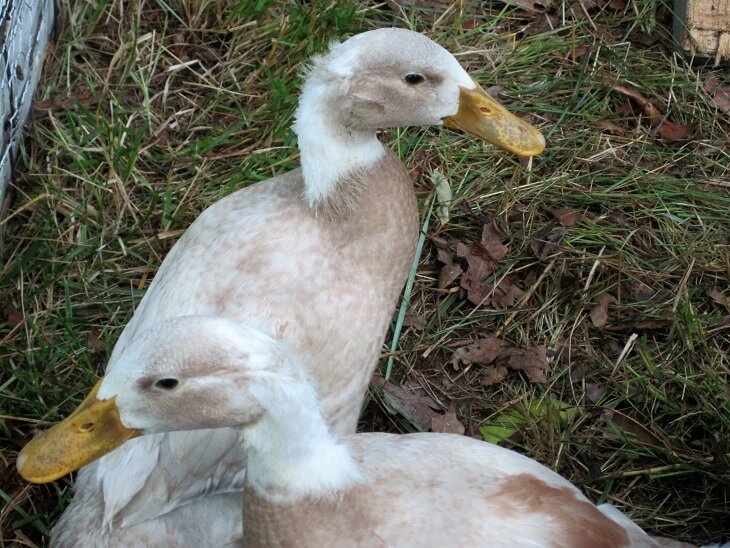
Something had to give. And for Pekin duck, the final destination was shaping up to be my roasting pan.
⚠️ Content warning: This article contains frank and graphic discussion of killing ducks. Video links, which are clearly marked, also contain graphic images of killing ducks. Read responsibly.
The thing is, we’d never butchered an animal before. And as annoying as the Pekin drake was, the idea of turning a living animal that we had fed and cared for into food was both sobering and a little intimidating.
But this was exactly the sort of challenge my husband and I had been preparing for. We wanted to take responsibility for our food—that’s one of the main reasons we moved far from the city and began homesteading. We knew that if we chose to eat meat in the city, it would have been meat raised by strangers.

No matter how it was marketed, there was no real way that we could know how it had been cared for or handled. We decided that if we weren’t willing to do the entire process ourselves—the raising, the housing, and the butchering—then we had no business eating meat.
So even though we weren’t looking forward to killing Pekin duck, we knew we could do so with the knowledge that he had lived a free-range life full of sunshine, fresh grass, and bugs. We would take the time to do it as quickly and painlessly as possible and make sure that his life was treated with respect.
Here’s the story of how we butchered our first bird. This is not necessarily a how-to, but rather, a neighbor sharing with you what she did to prepare and how she felt afterward.
Preparing For Butchering
Ever since we started homesteading, we knew that raising our own meat would someday be part of the process. With that in mind, even before we had ducks, we sought out more experienced homesteaders to learn how to butcher a bird. I cannot stress enough how helpful—crucial, even—it was to see it in person. No book can prepare you like real experience can.
We went to a nearby homestead and watched as our friend Stacey butchered one of her chickens. She had done this countless times, so she effortlessly narrated and demonstrate every step from having a live chicken to a bird ready for the oven. She answered our questions and let us do most of the process under her watchful eye. With that experience under our belt, we felt far more ready to do the deed when the time came.
And now the time was here.
The Takedown
To begin, we separated the drake from the rest of the flock and gave him a day in the barn with just water. This optional step allowed him to get all the food out of his stomach and allowed us newbies a better chance of not contaminating the meat with poop. It was also nice to give the rest of the ducks a break from his attacks!
The next morning, we assembled our supplies. We had knives, sheet pans, bowls to separate and keep butchered parts clean, and bags to collect feathers. For an excellent write up that both gives you a complete list of supplies needed and a well-photographed set of instructions, check out this homesteader’s site. I think one of the most important steps is sharpening your knife. This is not something to rush—in fact, the longer and more carefully it is done, the better. Not only will the sharpest knife be safe, precise, and nearly painless to use on the duck, the actual act of sharpening allows you to begin the mental preparations for killing an animal.
Catching The Duck
The next step is to get your bird. You never want to catch it by the legs, like you might a chicken. Not only does it run the risk of dislocating their more delicate joints, it introduces an unnecessary level of stress onto the animal.
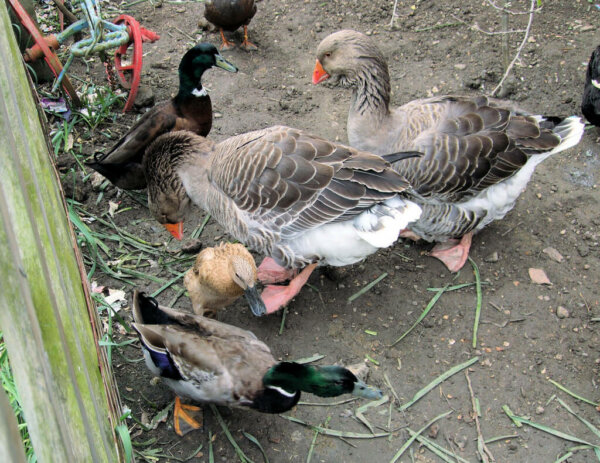
By isolating our duck in an enclosed space the day before, I found that it allowed us to gently catch him by the base of the neck and then hold him around the body, our hands holding his wings close. For both their sake and yours, it is important to keep things as calm as possible.
We steadied our duck, arms wrapped around his wings to hold him still, and brought him outside to a quiet, private place. We pinned him to the ground with gentle pressure from a knee and stretched his neck forward. We took a deep breath.
Slaughter Methods
There are several ways to kill a duck. Some opt to chop off the head with a hatchet or use a knife through the mouth and into the brain. Others employ broom sticks, use pruning shears, or even have the inexplicable ability to just break the neck in their hands.
In our case, we decided to slit the throat.
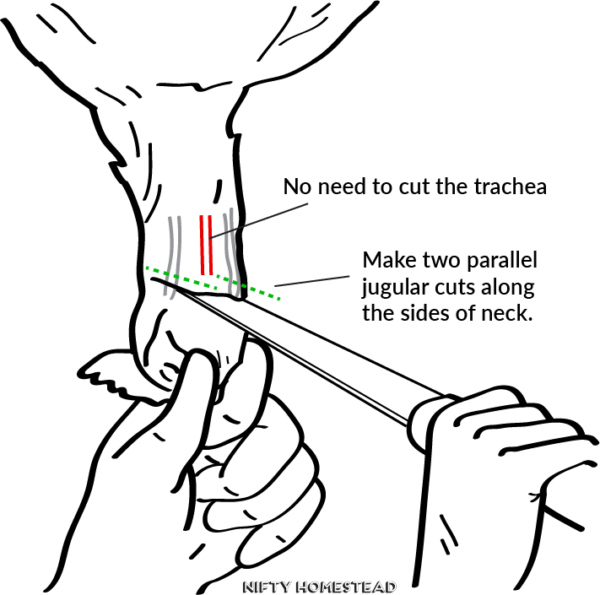
It seemed a quick and foolproof method but also one that didn’t distance us from the very visceral act of what we were doing. For us, this first killing was a very personal, sober, and spiritual moment. There had been years of waiting and preparing to get to this point of self-sustainability.
My husband made some quick, strong, slashes with his knife down the duck’s throat, and then he gently and firmly held the duck in his arms, keeping it steady, until it was over.
The Emotional Aspect
You need to be ready for this part. The part where you realize that you’ve killed an animal purposefully. The course of emotions that flowed through my heart were strong, sudden, and diverse. A wave of sadness, a gut reaction to seeing blood on white feathers and watching the light in our duck’s eyes fade.
A sense of exchange and thankfulness, knowing that my family will be fed because of this animal’s life. A grim jolt of chagrin, realizing that most every bit of meat I’d eaten before this day had probably been killed in an impersonal factory by a machine, not held beneath a warm blue sky. And finally, the never-before-felt feeling of responsibility, that at least in this case, with this animal, it had been done quickly, humanely, and well.
Is it too over-dramatic to take this so personally and seriously? I don’t think so. In my opinion, to gloss over this moment is to miss out on an integral part of eating—one that we’ve largely excised from our culture for the sake of convenience or lack of opportunity.
As his eyes closed, I was relieved that our duck was calm as he died—surprisingly so. He didn’t struggle or fight. Just moved his head a little bit, then stopped moving. We were all still for a moment.
Then it was time to spring into action. After making the kill, there’s a lot that needs to happen in short order to ensure that nothing goes to waste. As we plucked feathers, trimmed off feet and head, and removed the innards, it was bizarre to see how quickly a duck that we knew turned into a familiar roast-shape. The carcass looked like something I could buy from a store, wrapped in plastic, but the journey to get this one had obviously been a lot longer than the 10-minute drive to the store.
The Wrap Up
The recipes for duck are endless, so I will let you decide how to treat your bird. Just don’t waste anything. Our duck’s feathers are going into homemade pillows. His bones were simmered into stock. The innards were turned into a German-style offal-soup.
We even deep-fried the tongue for an admittedly strange—but still quite tasty—treat! Head-to-tail cooking used to be a way of life. Reclaim it from merely being an interesting approach on a cooking show and make every bit of your butchered animals count.
Conclusion
I think I will always be emotional when butchering any future bird. But I hope I stay that way—I never want to be calloused to what it means to take a life to feed my own. It reminds me of an old Jewish story I heard once.
A man sent his servant to take his chicken to the town butcher, Yisrolik, so that he could have dinner that night. He was surprised to see his servant return sooner than he expected, live bird in hand.
“Why didn’t you have the bird slaughtered?” his boss asked.
“When Yisrolik would slaughter,” began the messenger, “he would first sharpen the knife on a stone that he wet with his own tears. But the person who has replaced him, merely wets the sharpening stone with water from a bucket… Should I really allow such a man to slaughter the bird?! “
Resources
- How to Butcher a Duck, The Self Sufficient HomeAcre
- Ducks, Humane Slaughter Association
- Home Butchering Chickens and Ducks Humanely for Food with Images, Countryfarm Lifestyles







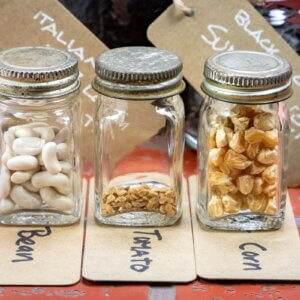































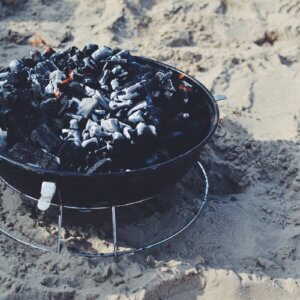


What a beautiful article. Thank you for sharing your experience. Trying to prepare myself and I found this to be helpful.
Hi Erica!
I am so glad you were able to find our article helpful!
Leigha